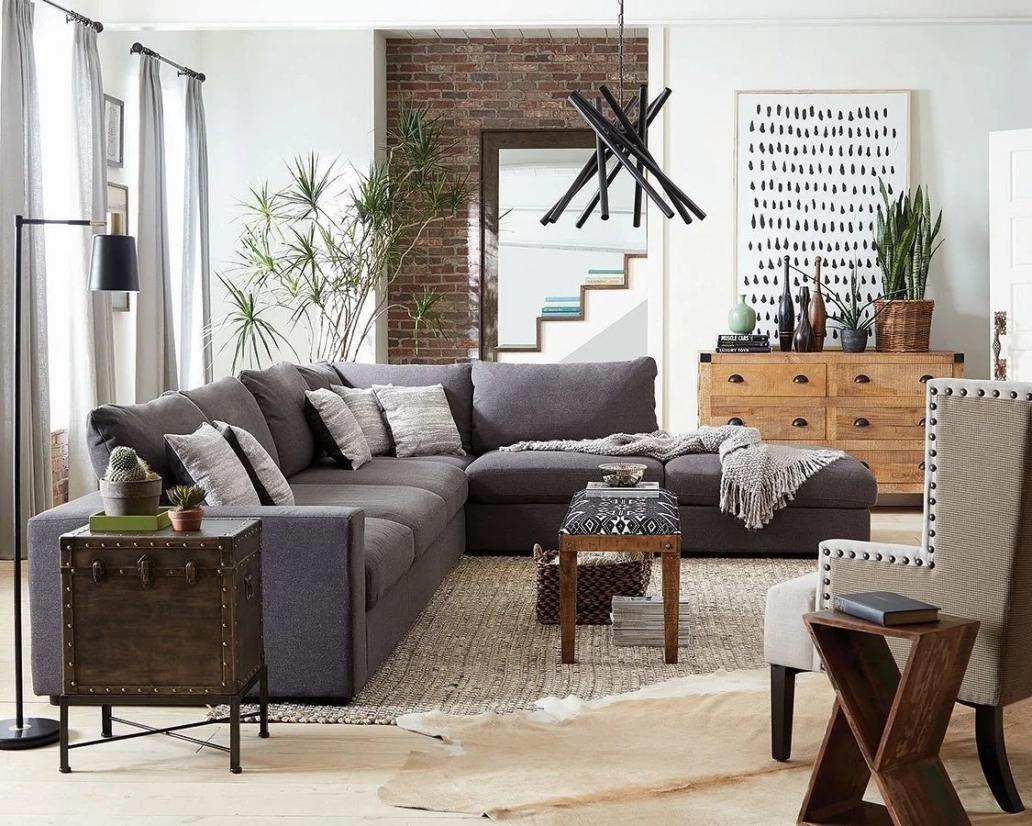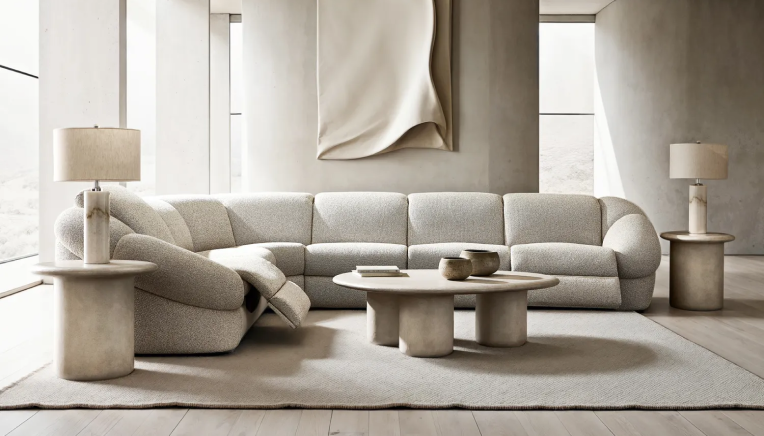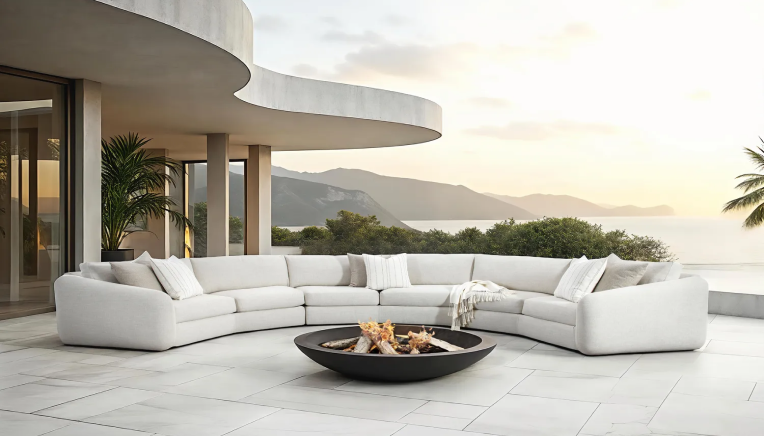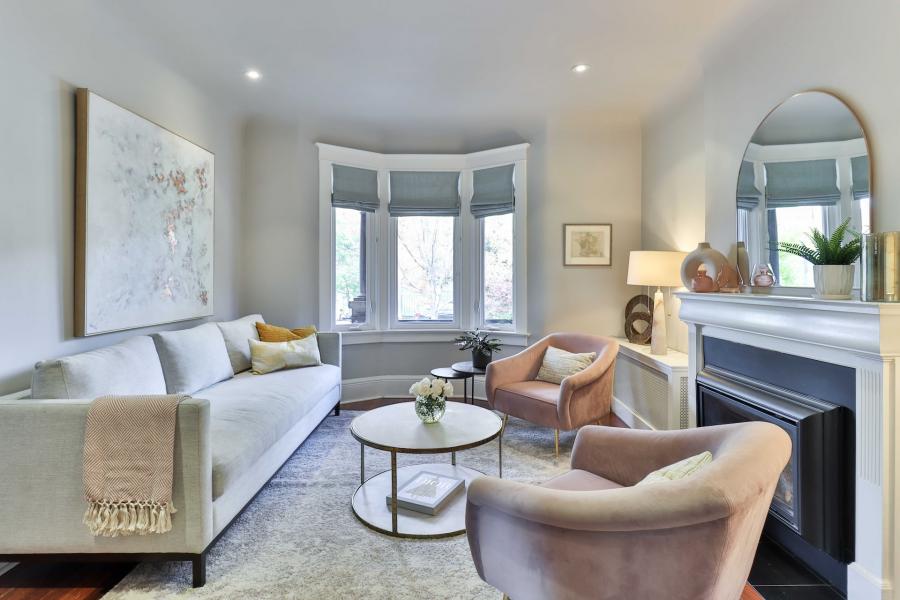
We cannot underplay the importance of furniture in interior home designs. From creating a formalized structure to beautifying your room to prescribing the flow of movement, furniture is what makes your home complete. As the backbone of home design, furniture establishes an appealing sense of order and is part of the items that turn your building into a sanctuary for relaxation and comfort.
However, more than just getting furniture, you must carefully choose your signature style to define your standard and showcase your individuality. Furniture styles add character and personality and should be able to match your vibes.
There are numerous home furniture designs to choose from, and the choice is 100% yours to make. Unfortunately, with various options comes the challenge of making the right decision. You'll have to properly understand the different furniture styles before selecting the best-suited one.
This article will focus on contemporary furniture styles and what makes them so alluring.
What Is Contemporary Design?
Contemporary furniture designs refer to styles patterned after trends and current preferences and looks. In other words, contemporary furniture styles revolve around designs that are popular at a given time. As such, contemporary styles are always changing as immediate past furniture trends can no longer be classified as contemporary.
Common characteristics of contemporary furniture designs include:
- The use of natural materials like stainless steel, wood, glass, etc
- Shades of bright accent colors, especially in wall arts, throw pillows, etc
- The presence of gentle curves and rigid edges
- Solid fabrics
- Modestly-patterned geometrics-inspired designs
- Minimal use of ornaments or use of ornaments with minimalist designs
Types of Contemporary Decor Style
As we mentioned above, contemporary furniture styles have constantly changed over time. Here's a rundown of various contemporary furniture styles from their earliest eras to date:
1. Art Deco
Art deco furniture is one of the earliest contemporary furniture styles. They succeeded the jacobean, William and Mary, Queen Anne, Pennsylvania Dutch, Louis XVI, Chippendale, Hepplewhite, Sheraton, federal, American empire, Victorian, and arts/craft styles.
Like traditional furniture designs, the art deco style comprises sensuous curves and likes, but unlike it, it doesn't include intricate carvings. These designs were typically a mix of luxurious and synthetic materials that made them elegant and semi-formal.
Common elements of this design include:
- Finishes - Ivory, mother-of-pearl, gold/silver leaf, lacquer, etc
- Accessories - resin and plastic
- Surfaces - mirrored and chrome
- Patterns - repetitive geometric
- Themes - wallpaper, upholstery
- Light fixtures
2. Mid-Century Modern
As the name implies, this style defined popular furniture choices from the 1930s to the 1960s. Coined by Cara Greenberg, a notable writer and art historian, this style was defined by simple designs with a near sculptural quality. These designs were more functional than stylish and popular designers in this era include Ray & Charles Eames, Saarinen, and George Nelson.
These are the essential defining characteristics of mid-century modern furniture:
- Colors - neutral and bold
- Ornamentation - little or none
- Lines - sleek and uncluttered
- Material - wood, metal, vinyl, glass, plywood, lucite, and plexiglass
3. Retro Contemporary
Right after the mid-century modern era came retro contemporary furniture designs; this contemporary style was a whimsical blend of the mid-century modern styles and preceding eras from the 1950s to the 1980s. Although this era was once viewed as a stylish modern design, this is what we know as retro now.
These furniture styles featured predominantly in this era:
- Boomerang tables
- 1950s diner-inspired furniture like chrome bar stools and Formica - topped tables
- Lighting fixtures - space-age styles
- One-piece chairs - molded plastic
4. Urban Contemporary
Urban contemporary furniture catered to the needs of city dwellers living in small spaces. As such, this era comprised small, well-designed furniture that was a revived decor concept. Although small, the urban contemporary furniture was cosmopolitan and sophisticated. Sometimes, they featured industrial styles that were a blend of contemporary and vintage.
These are the characteristics of this furniture era:
- Hues - calm, Serene, and comfy
- Lines and shapes - distinctive and soft
- Ornamentation - little
- Metallics - limited use; they were only needed for their visual effects
- Statement pieces - small or oversized pieces for contrast
- Rug materials - natural
5. Casual Contemporary
Here's one "old contemporary" style that we can relate to. Like its name, casual contemporary designs were soft, relaxed, and updated, although they were missing the organic silhouette details that characterized the mid-century modern furniture designs. This era may also feature larger styles customized to fit family rooms and open floor plans with significant space.
These are the characteristics of the casual contemporary style:
- Upholstery - leather
- Wood tones - medium
- Edges - eased and rounded
- Sofas - overstuffed with pillows at the arm tops
Common Elements of Contemporary Styles
How do you define our present-day contemporary furniture styles? These qualities tell you all about it:
Sustainability
Generally, contemporary styles change from time to time. However, the current trends are tilting towards sustainability, given the global economic situation and climate change. This reflects our all-around changing value system apparent in the architecture and other areas.
Flexibility
Besides sustainability, contemporary furniture designs are also tilting towards flexibility. People want to customize their designs to suit various styles and design trends. So, instead of purchasing already-defined designs, product lines now include options for hand-picking elements that suit your preferences and projects.
Square-Edged Couches and Chairs
Contemporary couches and chairs are similar to modern furniture styles in that they were raised above floor level. As such, you can see them conveniently. The chairs and couches have metal tabular legs with thin angles and without skirting or frills. Contemporary chair edges are designed as squares, although you may find round chairs.
Chic and Comfy, Simple and Clean Lines
Since soft edges and clean lines characterize contemporary furniture, it offers way more comfort than modern designs. The aesthetics are chic and hidden hinges and simple angles give it an elegant characteristic you'll love.
Contemporary furniture designs are also simple and minimalist-inspired. You'll find that the furniture is pretty light and modest.
Natural Materials and Textures
Contemporary furniture styles have natural textures, fabrics, and woods as major highlights. Accents of brown, white, black, gray, and other neutral colors are common choices for upholstered furniture, while the entertainment systems are minimalist and sleek. For bedrooms, you're likely to see low-slung beds or platforms, while the light fixtures are commonly in-built and are the perfect blend of style and functionality.
Contemporary Colors
As mentioned above, contemporary furniture styles favor blacks, whites, and neutrals. This is mainly to pull more attention to the decor, although some individuals prefer to add a pop of color to their scheme.
Contemporary furniture styles also feature sisal areas or textured natural jute rugs for a well-defined conversation area. This furniture gives off a clean and spacious look.
Modern vs. Contemporary Home Designs
It's easy to assume that contemporary home designs are the same as modern designs, as both words are synonyms. However, although they overlap in certain areas, they are not identical and mustn't be used interchangeably. While contemporary designs are styles in Vogue at a period, modern furniture designs can be traced to the early 1900s when the modernist movement began.
The modernist movement sought to deviate from the heavily ornamental designs popular in previous eras. This movement canvassed for more clean, sleek, minimal, and simple furniture. So, while modern furniture designs are fixed, contemporary designs are fluid and change per era. Contemporary designs are a mix of many other styles, including modern, post-modern, art deco, etc.
How To Pull Off a Contemporary Home Decor
Now that you know what contemporary furniture is all about, now is the time to decorate a contemporary home. Contemporary homes are easy to clean, minimalist, and functional. If you wish to get the best out of this style, the following tips can help:
Declutter the Space
Besides simplicity, contemporary styles also focus on minimalism, clean lines, openness, and space. So, clutter in your home goes against the rules and makes your room look smaller. To declutter, take an inventory of your space and try to combine pieces that can be used together or donate them. When you declutter, you’ll be able to find stuff easily and enjoy the top-notch functionality the contemporary design has to offer.
Begin with Neutral Color Palettes
Since contemporary designs are minimalist, you should stick with a simple color palette to nail the look. So starting with white and beige is a pretty good idea. You may also decide to extend the neutral tones— it's all up to you. The bottom line is that you let the neutrals dominate the space to achieve a truly contemporary look.
Use Accent Colors
Yes, you should still dominate your space with neutral colors when going for a contemporary look. However, contemporary styles also allow for a splash of colors here and there to add character to your space. This could be in the form of artwork or any other vibrant accent material of your choosing. Accent colors create contrast and can be used to draw attention to specific areas in the room.
Use Sleek and Smooth Lines/Textures
As we mentioned above, functionality is one of the key elements of contemporary furniture styles. So, you might want to ensure that your furniture is more comfy than fussy about getting it right.
A contemporary family room has an airy, welcoming feel thanks to boxy chairs and couches with straight, clean lines and the occasional sensual curve. It would be best if you stuck with furniture made from highly-finished wood, lacquer, glass, or chrome.
Leverage Natural Lights
The contemporary architecture style depends heavily on natural light to light up all shiny surfaces. Large windows can provide a room with a lot of natural light while maintaining a basic, elegant appearance by being left untreated or with minimum treatments like mesh shades, narrow blinds, or Roman shades.
Simple Accessories Always Does It
For contemporary designs, a few straightforward accessories will do. They produce a flash of color and add a twist to the furniture's linearity while keeping your room minimalist and simple. Adding a few sculptures, vases, or accent chairs with unusual shapes may also make your modern furniture stand out. Again, you can explore a piece of large-scale art to define the room's focal point.
Final Thoughts
Rightly dubbed "style chameleons" contemporary styles change to suit what's trendy at the moment. Although contemporary styles aren't as stable as you may love, they come with many perks. For example, our contemporary style comes in various shapes and styles and keeps you creative with each trendy style. As a result, there's always something new to look forward to with contemporary styles, which come in different designs/ color patterns.
So, have you fallen in love with contemporary furniture styles already? Then, head to our shop for the most beautiful and quality ones you can find. Our prices are reasonable, and there are many options to suit your interest.
FAQ
What's the difference between modern and contemporary furniture?
The major difference between contemporary and modern furniture designs is flexibility. While contemporary designs change from time to time, modern furniture styles refer to minimalist designs championed by the modernist art movement in the early 1900s. Again, contemporary furniture designs incorporate the simplicity and clean lines of modern furniture and some art deco elements.
What are the different contemporary styles?
The art deco, mid-century modern, retro-contemporary, urban contemporary, and casual contemporary styles are different contemporary styles. Currently, our contemporary styles comprise simple and clean lines, square-edged couches, natural textures and materials, flexibility, and sustainability. Contemporary styles are also uncluttered and chic.
What is contemporary furniture vs. traditional furniture?
Traditional furniture is the direct opposite of contemporary furniture. First, while contemporary furniture refers to existing trends or what’s popular now, traditional styles are generally 20th-century-inspired. Traditional furniture styles are usually oversized and include elaborate carvings and highly decorated furnishings. One of the perks of traditional furniture is that it doesn’t go out of style even when it isn’t trendy. On the other hand, contemporary furniture is always changing and features simplistic designs.












































































